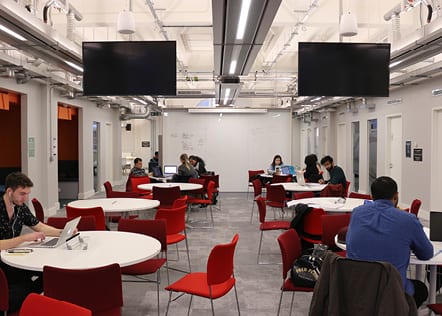City University Computer Sciences
Date posted: March 14, 2017
ArchitecturePLB’s upgrade works to the Department of Computer Science at City University London have been completed. The latest result of our framework appointment with the University, the department has been reconfigured to provide students and staff with a defined home and clear identity for the department and encourage collaboration and interaction between academic staff and students.
Set within a listed building, the department was suffering from a lack of physical identity and presence compared to other parts of the university. The previous configuration of the research centres did not allow informal space in which under-graduate or post-graduate students could work or interact with each other, whilst staff were located in blocks which “hung off” the corridors, lacking a sense of contiguous departmental space. The knock on effect was a lack of student engagement, with students feeling isolated from their tutors.
The solution developed by ArchitecturePLB has addressed these design flaws and are seen as a key element in improving student satisfaction and retention. Central to this has been the creation of a large shared space for students and staff. Space has been provided for students to work, either individually or in groups as well as low level seating where students and staff can engage in work and socialise together, encouraging much stronger bonds between them. A large shared space will host key activities such as research seminars and a range of meetings.
New wall graphics along the corridors have created a clear identity for the Department of Computer Science and gives students, staff and visitors a much clearer idea that they are in the Department. The three spaces that have been refreshed and refurbished have been named after individuals who played an important role in the development of Computer Science – Alan Turing, Ada Lovelace and William Playfair. Photographic images of the three have been used to create line drawing portraits, and combined with text by Ada Lovelace, composed to create an abstract wall graphic that appears and disappears as you move down the corridor. Each portrait sits adjacent to the room named after that person as a pictorial form of wayfinding.




